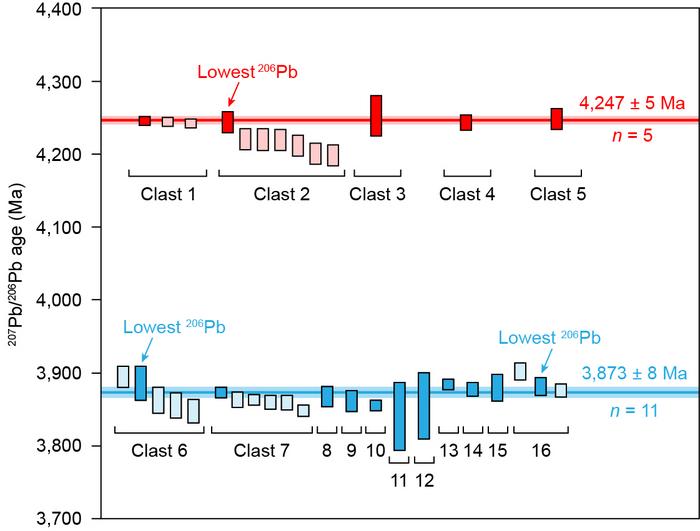Scientists have made a significant breakthrough in lunar research by determining the age of the South Pole–Aitken (SPA) basin, the largest and oldest impact crater on the Moon, thanks to a recent mission. This crater, located on the Moon’s far side, has been a subject of intrigue and debate among planetary scientists for decades. The mission, led by a team from the Institute of Geology and Geophysics at the Chinese Academy of Sciences, involved the collection and analysis of rock samples returned by the Chang’e-6 mission. These samples have now been dated to approximately 4.25 billion years ago.
The SPA basin, measuring about 2,500 kilometers in diameter, is not just significant due to its size—it represents a critical period in the early history of the Solar System. The formation of this vast crater is believed to have occurred during a time when the Solar System was bombarded by asteroids, marking a tumultuous era for celestial bodies, including the Moon. Despite its importance, determining the precise age of the SPA basin has been challenging, with indirect estimates previously varying widely. This difficulty in pinning down the age has left many questions unanswered regarding the Moon’s early geological history and its role within the broader context of Solar System evolution.
With the Chang’e-6 mission’s return of lunar samples, researchers saw an unprecedented opportunity to accurately date the SPA basin itself. The method employed by the research team, led by Prof. Chen Yi, involved analyzing impact melt rocks contained within the returned lunar soil samples. These rocks are vital because they provide direct evidence of the conditions and events surrounding the SPA basin’s formation.
The study focused on meticulous examination and analyses of approximately 1,600 fragments of lunar soil from the two samples collected by Chang’e-6. Through this process, scientists were able to identify 20 representative norite clasts, which exhibited characteristics indicative of an impact origin. The team conducted precise lead-lead isotopic dating on zirconium-bearing minerals found within these clasts, leading to the remarkable conclusion that the SPA basin experienced two distinct impact events—one occurring 4.25 billion years ago and another at 3.87 billion years ago.
Significantly, the older norites identified in the sampling, dating back to 4.25 billion years, displayed unique structural and compositional features. These characteristics suggested that they crystallized from a common impact melt sheet generated during the SPA impact. Prof. Chen Yi emphasized the importance of identifying these products as key to understanding the timeline of the SPA basin’s formation and providing a window into the Moon’s geological past.
This groundbreaking revelation presents the first direct, sample-based evidence establishing the formation of the Moon’s largest impact basin at a time shortly after the birth of the Solar System—approximately 320 million years post-formation. Such a definitive age serves as an essential anchor point for refining lunar cratering chronology and facilitates a better understanding of the Moon’s early evolution.
Moreover, gaining insight into the timing of the South Pole–Aitken impact can profoundly influence our understanding of the impact history of Earth and other celestial bodies. The implications of the dating of this colossal impact basin shed light on the processes that shaped not only the Moon but potentially other planetary bodies in our Solar System.
Additionally, the findings provide a compass for future research endeavors, opening pathways for additional in-depth investigations into the geological processes of the Moon and its external influences during its formative years. Such knowledge is crucial as scientists continue to piece together the complex history of our Solar System and its diverse celestial objects.
The Chang’e-6 mission has proven to be a milestone in this ongoing exploration, functioning as a mission that didn’t just return samples but also opened new avenues of scientific inquiry. It highlighted the importance of sample return missions for planetary science, emphasizing that ongoing lunar exploration can yield age-defining data and deepen our understanding of planetary impact cratering.
In summary, the dating of the South Pole–Aitken basin has not only filled a considerable gap in lunar chronology but also reaffirmed the Moon’s role as an invaluable archive of the Solar System’s history. Future explorations will undoubtedly build upon these findings, continuing the vital work of unraveling the mysteries left by our cosmic past, while simultaneously fostering a deeper appreciation for the intricate interplay of forces that shaped the celestial bodies we observe today.
As research advances, it becomes clear that the Moon holds secrets waiting to be discovered, insights that can enhance our scientific knowledge, and a shared human experience as we look towards the stars.
Subject of Research: Age determination of the South Pole–Aitken basin
Article Title: South Pole-Aitken Massive Impact 4.25 Billion Years Age Revealed by Chang’e-6 Samples
News Publication Date: October 2023
Web References: doi.org/10.1093/nsr/nwaf103
References: National Science Review
Image Credits: ©Science China Press
Keywords: South Pole–Aitken basin, Chang’e-6, lunar geology, impact cratering, 4.25 billion years, planetary science, lunar samples, geochronology.




